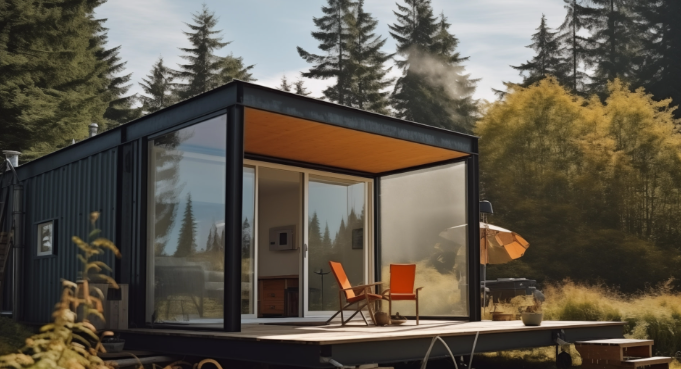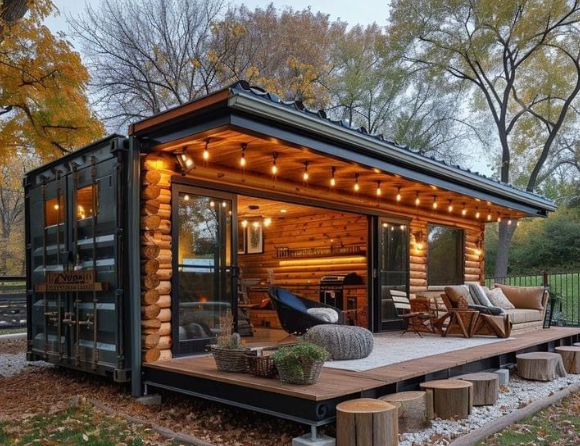- Off-Grid Living Is Growing Fast in the U.S.
- A DC to DC Charger Turns Movement into Energy
- Why Shore Power Isn't Always an Option
- Real Scenarios: Boats, Vans, and Cabins That Need Reliable Charging
- How to Build a DC to DC Charging System for Off-Grid Life
- One Product That Simplifies It: EcoFlow’s Fast Car Charger + DELTA 2 Max
- What to Watch Out for During Installation
- FAQs: What Else Should Off-Grid Users Know About DC to DC Chargers?
- Conclusion: Stay Powered Anywhere, Anytime
DC to DC Charging for Boats, Vans, and Cabins: How to Stay Powered Without Shore Power
- Off-Grid Living Is Growing Fast in the U.S.
- A DC to DC Charger Turns Movement into Energy
- Why Shore Power Isn't Always an Option
- Real Scenarios: Boats, Vans, and Cabins That Need Reliable Charging
- How to Build a DC to DC Charging System for Off-Grid Life
- One Product That Simplifies It: EcoFlow’s Fast Car Charger + DELTA 2 Max
- What to Watch Out for During Installation
- FAQs: What Else Should Off-Grid Users Know About DC to DC Chargers?
- Conclusion: Stay Powered Anywhere, Anytime
You’re living the dream: on a boat, in a van, or tucked away in a quiet cabin. But there's one problem that comes up again and again: your battery won't stay charged. You lose lights, internet, fridge cooling, and phone access when you need them most. And you can’t always plug into shore power.
A DC to DC charger helps you fix that. It lets you charge your battery directly from your vehicle or boat’s engine. Even if the sun disappears or you’re miles away from a grid, you can still power your setup. This guide walks you through how it works and how it fits into off-grid life in 2025.
Off-Grid Living Is Growing Fast in the U.S.
More people in the U.S. are choosing cabins, boats, vans, or trailers as part-time or full-time homes. From mountain retreats to mobile homes, this lifestyle gives freedom. But it comes with a basic challenge: reliable power.
Solar helps, but only when the sun is strong and consistent. Generators are noisy, fuel-hungry, and often banned in campgrounds. That leaves the engine as your most stable charging source. A DC to DC charger lets you use that energy well.
Off-grid living means you can’t rely on AC wall plugs. You need smart, flexible ways to keep your power flowing.
A DC to DC Charger Turns Movement into Energy
When you drive or run your engine, your alternator creates energy. But without a DC to DC charger, much of it goes unused. These chargers safely take energy from the alternator and send it to your auxiliary battery.
They adjust voltage and current so the power is just right, especially for sensitive lithium batteries. That means stable charging, even when your vehicle is idling or the engine's output changes.
Think of it this way: if you're already burning fuel, the charger helps you store some of that energy. And then use it later.
Why Shore Power Isn't Always an Option
Some locations don’t offer shore power. Others charge high fees or have limited hours. If you’re anchored far out or boondocking in the desert, plugging in is impossible.
Even if shore power is available, relying on it too much limits your freedom. You plan your route based on hookups, not your needs. With a DC to DC charger, your power system goes with you. You build more independence.
And unlike solar, this method isn’t affected by weather. It’s the backup that keeps working when everything else stops.


Real Scenarios: Boats, Vans, and Cabins That Need Reliable Charging
- Boats: You anchor near a bay for the weekend. Your GPS, lights, and bilge pump run off battery power. Solar panels slow down during overcast mornings. The boat engine can recharge your system fast with a DC to DC charger.
- Converted vans: You drive 100 miles to your next stop. That’s a chance to gain hours of battery power—if you have the right setup.
- Cabins with backup vehicles: Your off-grid cabin has no grid connection. A parked truck with a DC to DC charger becomes your silent generator. Just turn the engine on and send power to your battery system.
These aren't rare cases. In fact, off-grid setups that ignore engine-based charging usually face limits faster.
How to Build a DC to DC Charging System for Off-Grid Life
Step 1: Check Your Engine Voltage Output
Identify if your engine runs on a 12V or 24V system.
- Most vans and trucks are 12V.
- Many boats, buses, and larger RVs use 24V.
Choose a DC to DC charger that matches this voltage to avoid undercharging or compatibility issues.
Step 2: Match the Charger to Your Battery Type
Review the type of battery in your auxiliary system.
- Lithium (LiFePO4) batteries require multi-stage charging with precise voltage regulation.
- AGM or Gel batteries have different charging needs.
Select a charger that supports your battery profile, either through automatic detection or manual setting.
Step 3: Choose the Right Amperage Output
Pick a charger with an amperage rating that suits your energy needs and alternator capacity.
- Higher amps charge faster but require thicker cables and a stronger alternator.
- For example, a 30A charger may add 300–400Wh per hour, but draws substantial power.
Make sure your alternator can handle the extra load without overheating.
Step 4: Plan for Electrical Safety
Build your system with key safety components in place:
- Fuses at both ends (near alternator and near battery)
- Temperature sensors to prevent charging in extreme heat
- Ignition sensing or voltage triggers to stop charging when the engine shuts off
Step 5: Choose a Good Mounting Location
Install the charger in a location that avoids:
- Excess heat from the engine
- Splash zones on boats or wet environments
- Sealed or tight compartments with poor airflow
Give it space to stay cool during long charging sessions.
Step 6: Use Proper Wiring Techniques
Your wiring determines how efficient and safe the system is.
- Use the correct gauge wire based on amperage and cable length
- Avoid loose terminals or thin crimp connectors
- Keep wire runs as short as possible to reduce voltage drop and heat
One Product That Simplifies It: EcoFlow’s Fast Car Charger + DELTA 2 Max
If you need a clean off-grid charging solution, the EcoFlow 800W Alternator Charger paired with the EcoFlow DELTA 2 Max Portable Power Station works well. The charger connects to 12V or 24V systems. It charges your portable battery directly while the engine is on.
The DELTA 2 Max stores over 2kWh of energy and supports expansion. It gives you AC and DC output, so you can power a cabin, van appliances, or marine electronics. The car charger can add hundreds of watt-hours per hour while you drive or idle.
Because it’s designed for vehicle input, the system is safe and smart. It adjusts input based on voltage and temperature. It protects your battery and doesn’t strain your alternator.
For anyone tired of noise, fuel, or weak solar on cloudy days, this combo makes daily power much easier to manage.
What to Watch Out for During Installation
- Match your charger to your alternator. Check max output and make sure you’re not pushing too hard.
- Don’t skip fuses. A short can ruin wiring or worse.
- Keep your charger away from water, salt, or engine heat.
- Avoid running long cables unless the gauge supports it.
- Always read your battery specs before connecting anything.
If you're not confident with 12V or 24V systems, talk to a pro. A small mistake can become a major cost.


FAQs: What Else Should Off-Grid Users Know About DC to DC Chargers?
Q1: Can I use a DC to DC charger in cold or wet climates?
Yes, many chargers are weather-resistant, but you should still install them in a dry, protected area. Moisture, salt air, and freezing temperatures can reduce lifespan or cause faults. If you live on a boat or in a snow zone, pick a model with sealed housing and thermal cutoffs.
Q2: What happens if my engine doesn’t run long enough to charge the battery?
DC to DC charging works best during drives over 30 minutes. If you stop and start often, your battery may only get partial charges. That’s okay for small top-ups but not for full recharges. Consider pairing with solar or keeping idle sessions longer if you need deeper charging.
Q3: Can I connect multiple DC to DC chargers to one battery bank?
Yes, but only if the battery system supports it and your alternator can handle the load. You’ll need to size wires, fuses, and input controls accordingly. Some users split the load across multiple charge points, like engine + solar + shore. Make sure you track input amps and battery limits.
Q4: What size fuse should I use for my DC to DC charger?
Fuse size depends on the charger’s input and output current. For a 30A charger, use a 40A fuse to allow safe operation without nuisance trips. Always place one fuse close to the alternator and one near the battery. Use quality fuses rated for DC use.
Q5: Will this work for cabins with no vehicle nearby?
You can still use a DC to DC charger with a parked vehicle or even a generator with a 12V/24V output. Just start the engine, and the charger does the rest. This works well in emergency setups where solar fails or in cabins where fuel-based charging is needed occasionally.
Conclusion: Stay Powered Anywhere, Anytime
You don’t need hookups to stay powered. With a DC to DC charger, you can turn every drive or engine run into usable energy. That means fewer limits and more freedom.
Off-grid life should feel free, not fragile. These chargers give you control, and they do it quietly and safely. Whether you live in a van, sail the coast, or own a remote cabin, this is a tool worth adding to your setup.
It’s one of the easiest upgrades to power your lifestyle in 2025.